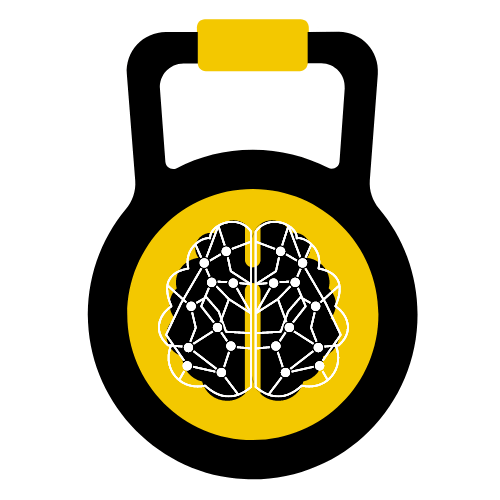Nowadays the pharmaceutical market for improving brain activity is flooded with supplements and drugs. A large part of these substances are completely natural and derive from the most common herbs or flowers.
Few people could imagine that a little flower of Europe contains an almost unknown dietary supplement with great potential, which is called vinpocetine. Vinpocetine is a kind of alkaloid, synthesized by the vincamine molecule. It can be naturally found in the flower Vinca minor, also known as periwinkle in Europe.
Vincamine is the plant’s main constituent and its concentration reaches 25-65% of the total alkaloids. Periwinkle has been used in traditional European medicine for treating headaches.
Vinpocetine has been used in European medicine for the treatment of brain diseases and for improving memory for decades. That is why vinpocetine is categorized as a nootropic. Successfully improves blood flow to the brain, which is due partly to the moderate vasodilatory effect.
Furthermore, there is a slight improvement in the oxygen levels in the brain. People who have suffered a heart attack have a more drastic improvement in the oxygen status of the brain.
One dose of 40 mg, 1 hour before mental activity dramatically improves memory in the Sternberg test. Vinpocetine improves mood, focus and reaction time. Positive action is noted in a higher dose and gets a short-term effect.
What Is Vinpocetine
Vinpocetine is a kind of alkaloid, synthesized by the vincamine molecule. It can be naturally found in the flower Vinca minor, also known as periwinkle in Europe. Vincamine is the plant’s main constituent and its concentration reaches 25-65% of the total alkaloids.
Periwinkle has been used in traditional European medicine for treating headaches. Vinpocetine has been used in European medicine for the treatment of brain diseases and for improving memory for decades. That is why vinpocetine is categorized as a nootropic.
Vinpocetine still hasn’t been deeply studied in modern science. There are mostly in-vitro studies conducted, not direct human studies. At this stage, resources for the action of vinpocetine can be found mostly in the Russian scientific literature.
Western researches are too limited. It is, however, considered that vinpocetine has enormous potential and it is yet to be studied on humans. Vinpocetine has relatively low digestibility in the human body, reaching 6.2-6.7% at intake in aqueous solution.
In animals, however, assimilation can reach 52%.
It is interesting to note that the lower digestibility of the substance can be detected in the hungry state of the body while intake of food may increase the assimilation up to 60-100%, respectively 10-13% of the total amount vinpocetine.
How Does Vinpocetine Work
After getting into the body, it is being metabolized into apovincaminic acid that appears to be its active metabolite. Oral intake of vinpocetine leads to a rapid increase in the serum levels after only 20 minutes of intake, and the half-life of the active substance is 1 hour and 46 minutes.
Vinpocetine cannot be detected in the blood two to three hours after oral intake. After getting into the blood, almost all of the vinpocetine bonds to proteins in the blood plasma. The apovincaminic acid reaches its peak quickly, thanks to the rapid metabolism of vinpocetine.
Peak levels of apovincaminic acid occur 1 hour after oral intake and get normalized 3-4 hours later. Vinpocetine and its metabolites get easily disposed out of the body and there is no accumulation with regular consumption.
Vinpocetine has the ability to smoothly pass the blood-brain barrier. Vinpocetine reaches the brain very quickly when nearly 3-4% of the administered substance is absorbed. That is the equivalent to 50-60% of the total vinpocetine utilized.
The substance is easily detected in the brain but has its impact on specific areas such as the visual cortex, thalamus, basal ganglia, and striatum.
The main action mechanisms are four:
- Inhibition of the PDE1 enzyme. This increases the concentration of the protein cGMP and stimulates quietness of the blood vessels;
- Inhibition of the so-called calcium and sodium channels, which exhibits suppressive, effect on the release of certain neurotransmitters. On the other hand, the flow of potassium gets stimulated, which is associated with improved memory;
- Inhibition of pro-inflammatory cytokines and of anti-inflammatory effect;
- Stimulation of alpha-androgenic receptors as well as peripheral GABA-receptors. This partly explains the improvement of mental attitude.
Potential and Proven Benefits In People
- Slight improvement in glucose consumption by the brain in healthy adults and a moderate improvement in individuals who have suffered a heart attack;
- Successfully improves blood flow to the brain, which is due partly to the moderate vasodilatory effect. Furthermore, there is a slight improvement in the oxygen levels in the brain. People who have suffered a heart attack have more drastic improvement of the oxygen status of the brain;
- The neuroprotective properties of vinpocetine also occur with intoxication by medication that causes memory loss. The usage of 40 mg vinpocetine prevents the onset of memory loss and improves short-term memory performance;
- One dose of 40 mg, 1 hour before mental activity dramatically improves memory in the Sternberg test. Vinpocetine improves mood, focus and reaction time. Positive action is noted in a higher dose and gets a short-term effect. This effect was noted in subsequent studies on athletes, but it was combined with ginkgo biloba or mix with acetyl-L-carnitine, alpha-lipoic acid, fish oil, and huperzine A.
Recommended Dosage
- Vinpocetine can be used for prophylaxis, under certain conditions that require daily intake, but can be taken also not regularly.
- The safe daily intake varies between 15 and 60 mg daily, divided into 2-3 times during the day. The minimum single dose is 5 mg and the maximum is 20 mg. Vinpocetine can be used successfully for six months for similar purposes.
- High single doses of 30-45 mg are possible also before certain situations, such as physical or mental stress. Such a dose is used before mental work, learning or heavy workouts. Despite the fact that a single dose is safe to take there is no evidence for the positive effect of such high intake at this stage.
- It is recommended vinpocetine to be taken with food because assimilation of the substance gets increased double, compared to assimilation on an empty stomach.
Side Effects and Contraindications
- Orally taken vinpocetine does not show typical side effects and does not affect the blood pressure, in contrast to intravenous injection equivalents, which may decrease blood pressure drastically.
- Headache or stomach pains are very common complaints when taking a high dose of 15 mg or even more.
- There are two significant side effects currently. The more common one is the occurrence of contact dermatitis in the form of eczema on the skin. The second one is a sharp decline in a number of white blood cells (agranulocytosis) but is registered in a separate case and to confirm such effects, additional studies are needed.
- The long-term use of vinpocetine for more than six months can impact negatively the immune system.
- Vinpocetine is tolerable to be combined with medicaments such as drugs for diabetes or blood thinners.
- Intake by pregnant and lactating women is not recommended. There is not enough data on the safety of the substance.
How to Combine Vinpocetine
- Vinpocetine can be used for memory improvement and cognitive functions. For this purpose, vinpocetine may be combined with cholinergics such as DMAE, CDP-Choline and Alpha-GPC, and precursors of acetylcholine, such as acetyl-L-carnitine and huperzine A.
- Vinpocetine is often used as a pre-workout stimulant for improvement of mental attitude, focus and stimulation of the central nervous system. It may be combined with caffeine, tyrosine, and cholinergics in these cases.
- Vinpocetine shows an auxiliary effect when taken with nitrates because it neutralizes the body tolerance, formed after regular intake of nitrates. Adding vinpocetine improves the vasodilatory properties of nitrates. Beetroot extract is used in the food industry as a source of nitrates.
Where Can We Find Vinpocetine
Vinpocetine can be found as a standalone product - in the form of a dietary supplement or in pharmacies. Available in capsules or tablets, as the concentration in one capsule; ranges between 5 mg and 10 mg.
Vinpocetine is frequently used in complex formulas, the most common of which are brain stimulators and memory enhancers.

